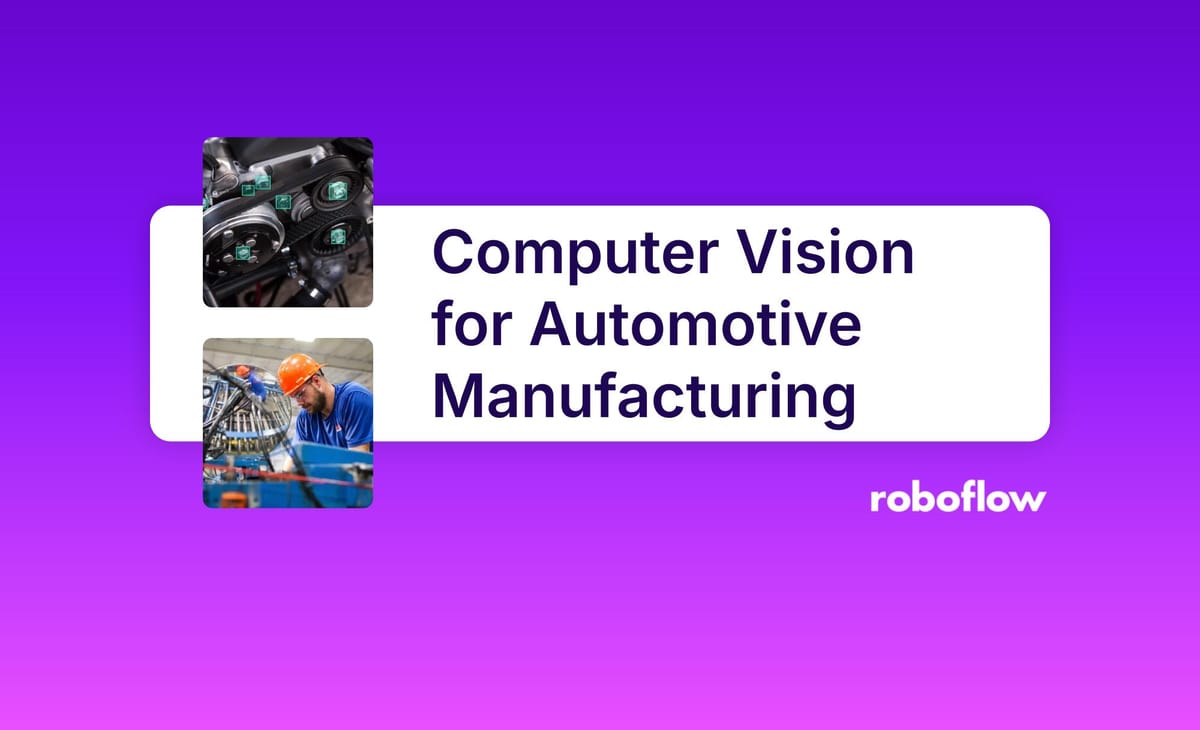
Automotive manufacturing is a unique, competitive, and complex segment within the manufacturing industry which requires continually improving processes using the latest technology to gain market share. The industry is going through rapid changes and automotive manufacturers are undergoing modernization efforts to increase overall equipment effectiveness, reduce cost of quality, and increase first pass yield.
The latest advancements in AI are helping automotive manufacturers modernize their factories to improve worker productivity and reduce labor costs. In this post, we will walk through 4 key areas that AI and computer vision are accelerating digital transformation efforts for automotive manufacturers.
Discover Computer Vision Use Cases for Automotive Manufacturing
1. Defect Detection in Manufacturing
Automated defect detection systems can be put in place anywhere in the manufacturing process to help monitor for any damage that might cause downstream issues or lead to increased customer complaint rates or recalls. Cameras that stream video or images to computer vision models throughout the facility help catch issues and allow for rapid troubleshooting to keep facilities running smoothly.
Common use cases for passive defect detection models are metal defects or glass defects. Additional defect detection use cases can be used for finding missing parts, faulty seals, disconnected wiring, broken components, and more.
The benefit of computer vision, rather than machine vision, is that you can train custom models across a variety of tasks and maintain flexibility as your processes change. Machine vision is a rules-based system that is rigid and generally harder to use in the many scenarios required of factory modernization efforts today.
2. Error Proofing Procedures in Manufacturing
Error proofing in manufacturing is any method that removes the possibility for an error to happen or makes an error immediately known once it has occurred. Error proofing systems are put in place to reduce human errors that lead to defects but not all procedures can be error proofed easily. Eliminating possible errors by changing or removing parts and changing processes or tasks is not always an option.
When the processes cannot be altered, vision AI can be used to detect errors and mitigate downstream effects of errors. Vision AI can identify errors in a procedure by monitoring worker movements or identifying out of order assembly. This allows for automated prevention by understanding worker patterns and detection once the error has been made by monitoring the end result of any step in the process.
Using vision AI, you can monitor if operators are following visual instructions, verify operators have the correct part at any given step, confirm the right tools are being used to assemble parts, and identify patterns to improve operations.
3. OCR and OCV in Manufacturing
Optical character recognition and optical character verification are two effective vision AI strategies to deploy in automotive manufacturing facilities to improve quality. Both tactics can be used to ensure the right parts are being used, parts can be tracked with an accurate chain of custody, and products are in compliance with any regulatory requirements.
OCR is a good solution for processes that have a variety of parts because it has the ability to read any individual series of letters, numbers, or characters to provide a structured output you can send to other systems for tracking. OCR is adaptive and flexible which allows you to handle new processes without updating your vision AI system. OCV is useful when there is low variability in the characters you are reading because it is matching the visible characters to a predefined set out characters expected at a particular time in the process.
4. Worker Augmentation
Vision AI is an effective solution for increasing the effectiveness and efficiency of operators at any stage of your manufacturing process. Defect detection systems can help augment visual quality inspection processes, operators can more quickly learn processes with the aid of visual displays, and focus operators on specialized tasks while removing repetitive operations.
Production facilities can create more comfortable conditions, increase worker well-being, and reduce turnover by using vision AI to aid workers in their jobs. As noted in this post, error proofing procedures can quickly upskill workers into new processes as well as provide guidance to help workers efficiently complete tasks.
Computer Vision in the Automotive Industry
Automotive manufacturers can accelerate facility modernization projects by implementing vision AI across their processes. Defect detection, error proofing, OCR, and worker augmentation are just a few of the ways AI can improve quality and increase productivity.
Read case studies and step-by-step guides on how you can implement vision AI today.
Cite this Post
Use the following entry to cite this post in your research:
Trevor Lynn. (Jan 6, 2025). Computer Vision for Automotive Manufacturing. Roboflow Blog: https://blog.roboflow.com/computer-vision-automotive-manufacturing/
